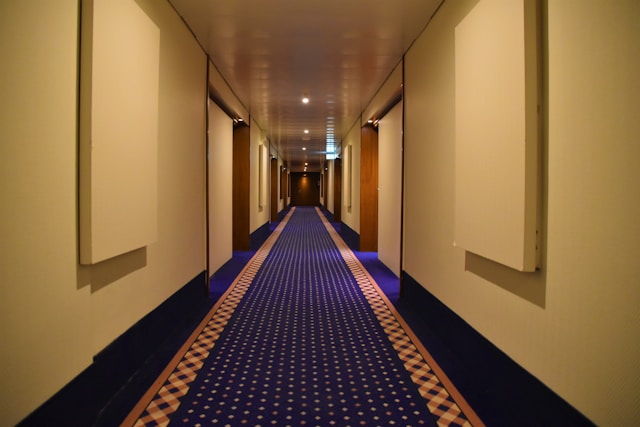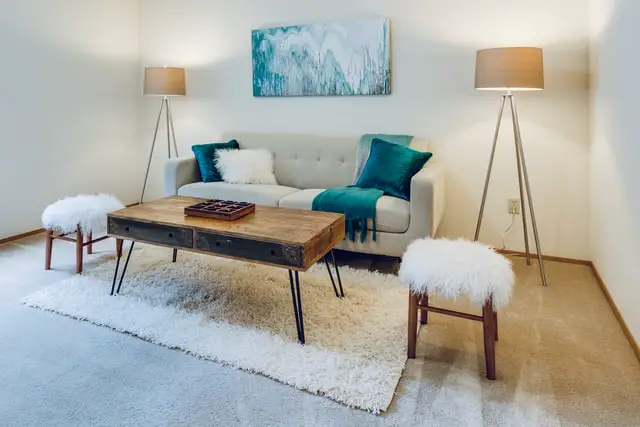Carpeting remains an extremely popular flooring choice in business, corporate, commercial and residential spaces. It adds warmth, comfort, and aesthetic appeal to homes and commercial spaces. As carpeting is available in a wide range of textures, colours, and designs, it can complement any interior style or personal taste. In addition to their decorative and wider overall visual appeal, carpets offer numerous functional advantages. Carpets help enhance comfort underfoot, offer insulation against cold floors, and contribute to a quieter, safer home or business environment by reducing noise and minimising the risk of slips and falls.

Nonetheless, carpets still face stiff competition from other floor coverings, such as tiles, which might be more practical in some spaces and are easier to keep clean in the long term. However, despite their charm and warmth, carpets are also prone to wear and tear over time. Unlike tiles, carpets cannot chip and crack, but they are vulnerable to fraying, thinning, fading, odour contamination, rippling (developing unsightly and unsafe “waves” or wrinkles on the surface), water damage, and staining. These factors must be considered when choosing the flooring for your space.
What Are the Drawbacks of Carpeting?
High foot traffic will directly contribute to the deterioration of carpeting over time. Additionally, carpets tend to absorb odours from pets, food, and moisture, resulting in unpleasant smells that can linger in the room, making regular cleaning and deodorising crucial in maintaining a fresh and inviting environment. Leaks, spills, or flooding can cause serious water damage to carpets, resulting in a range of costly and harmful issues. Prolonged exposure to moisture encourages the growth of mould and mildew, which can create unpleasant odours and directly lead to health risks. Additionally, water can weaken the carpet’s backing and padding, compromising its structural integrity and overall durability. Prompt action is essential to address water-related problems, prevent further damage, and extend the lifespan of your carpeting.
Why Are Carpets Important?
Carpets significantly contribute to both the visual appeal and functionality of a space, serving purposes that extend well beyond mere decoration, such as:
- Comfort. Carpets offer a soft, cushioned surface, making walking, sitting, or even lying on the floor much more comfortable compared to hard flooring options.
- Noise Reduction. Carpets are excellent sound absorbers, thereby reducing noise levels in busy households or office settings. This makes them particularly beneficial in shared spaces such as flats, townhouses, duplexes, multi-story buildings, and workplaces.
- Insulation. They effectively and passively regulate indoor temperatures by retaining warmth during colder months and absorbing heat in the summer, which can help lower electricity costs whilst at the same time creating a cosier atmosphere.
- Safety. In contrast to slippery hard floors, carpets minimise the risk of slips and falls, which is especially important in homes with children or elderly residents. This is particularly important where staircases are present.
- Aesthetic Value. With a wide range of colours, textures, and patterns to choose from, carpets can enhance the style and character of any room, allowing for personalised design options. Carpets play a significant role in both the appearance and functionality of a space.
- Health Benefits/Improved air quality. Carpets act as filters by trapping dust, allergens, and other particles, preventing them from circulating in the air, which significantly contributes to improved air quality.
- Covering imperfections. Carpets can be effectively used to conceal flaws or imperfections in existing flooring.
- Anti-static properties. Some carpets are specifically engineered with anti-static properties to reduce the risk of static electricity shocks. This feature is particularly beneficial in environments with electronic equipment, helping to protect sensitive devices and ensure a safer workspace.
- Cost-effectiveness. Compared to other types of flooring, carpets are often more affordable, making them an economical choice for homeowners.
- Easy Installation. Carpets are generally easier to install than alternatives like wood or tiles, saving both time and effort during the installation process.
How to Take Care of Your Carpets
Proper carpet care not only preserves the appearance but also extends the life of your carpeting. Essential tips for maintaining carpets in excellent condition for a longer period include:
- Vacuum Regularly. Vacuum at least once a week, and more frequently in high-traffic areas, to remove dust, dirt, and allergens that can degrade carpet fibres over time.
- Clean Spills immediately after they occur to prevent staining. Blot gently with a clean cloth or paper towel instead of rubbing, as more aggressive rubbing can push the spill deeper into the fibres.
- Schedule Professional Deep Cleaning. If possible, have your carpets professionally cleaned every 12 to 18 months. Deep cleaning extracts embedded dirt, eliminates odours, and refreshes the carpet’s overall appearance.
- Use Area Rugs and Mats. Place mats at entryways and rugs in high-traffic zones to reduce tracked-in dirt and accumulation and minimise wear on the carpet.
- Avoid Direct Sunlight. Limit prolonged exposure to sunlight, as it can fade carpet colours over time. Use blinds or curtains during peak daylight hours to shield carpets from harsh UV rays.
- Move Furniture Periodically. Rearranging furniture helps prevent permanent indentations and promotes even wear across the carpet surface.
- Apply Carpet Protectors. Consider using a carpet protector or stain-resistant treatment to decrease the likelihood of stains and damage, which will help prolong the life of your carpet.
Why Use Carpet Installation and Repair Specialists?
These specialists are critical in extending the life, safety and beauty of your carpets. Their services include:
- Odour Treatment. Advanced cleaning processes can eliminate odours, restoring freshness to carpets, particularly those affected by pets.
- Stain Removal. Using specially formulated products and techniques, repair specialists can effectively remove stubborn stains without damaging the carpet fibres.
- Water Damage Restoration. Where water damage has occurred, specialists can extract moisture, disinfect the carpet, and prevent mould growth, saving you from costly replacements.
- Re-stretching. This process helps eliminate ripples, wrinkles, and bumps caused by improper installation, heavy foot traffic, or general wear. Re-stretching the tension restores the carpet’s original smooth appearance, ensuring it lies flat and improving both its look and safety.
- Stitching and Patching. Where a carpet has tears, holes, frayed areas and burn marks or melted spots caused by cigarettes, candles, or hot objects, repair specialists can stitch, patch or re-weave these areas seamlessly, restoring the carpet to as close to its original condition as possible.
- Seam Repair. Loose seams can lead to further tearing if not repaired. Specialists can reattach or sew seams to prevent further damage.
Conclusion
There’s no denying that carpeting provides much more than just a soft surface beneath your feet. It enriches spaces with comfort, beauty, and functionality, making it an excellent choice for both residential, business, corporate and commercial environments. While the initial cost of carpeting may appear daunting, its numerous benefits – including comfort, safety, aesthetic appeal, and practicality – make it a sound investment for all spaces. By incorporating carpeting into your design, often with the guidance of an interior designer, you can create a welcoming atmosphere that enhances the overall experience of your environment. In residential settings, carpets create a warm and inviting ambience. They provide soft cushioning, making them ideal for families with children, while also minimising noise between rooms and helping to insulate indoor temperatures. This contributes to a more energy-efficient and comfortable home year-round. In office and commercial spaces, carpeting plays an equally significant role. It improves acoustics by absorbing sound in busy areas, reduces slip hazards, and adds a touch of professionalism to any setting. Beyond aesthetic benefits, well-maintained carpets help promote healthier indoor air quality by trapping dust and allergens, which is crucial for the well-being of occupants. Whether you seek comfort, safety, or a polished appearance, carpeting offers a versatile and valuable flooring solution that enhances everyday living and working environments. It’s not just about covering the floor; it’s about creating spaces that feel good and function well.
